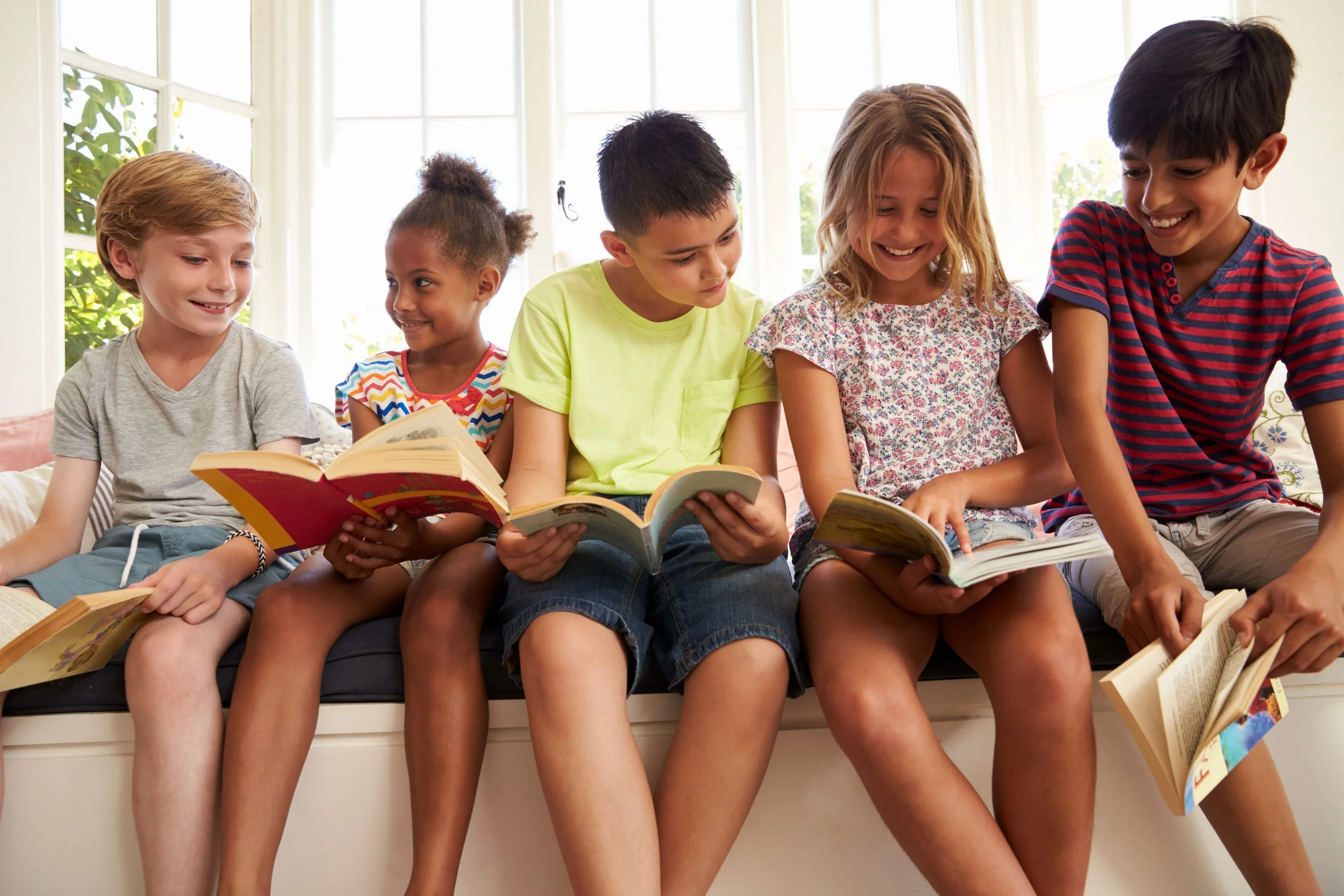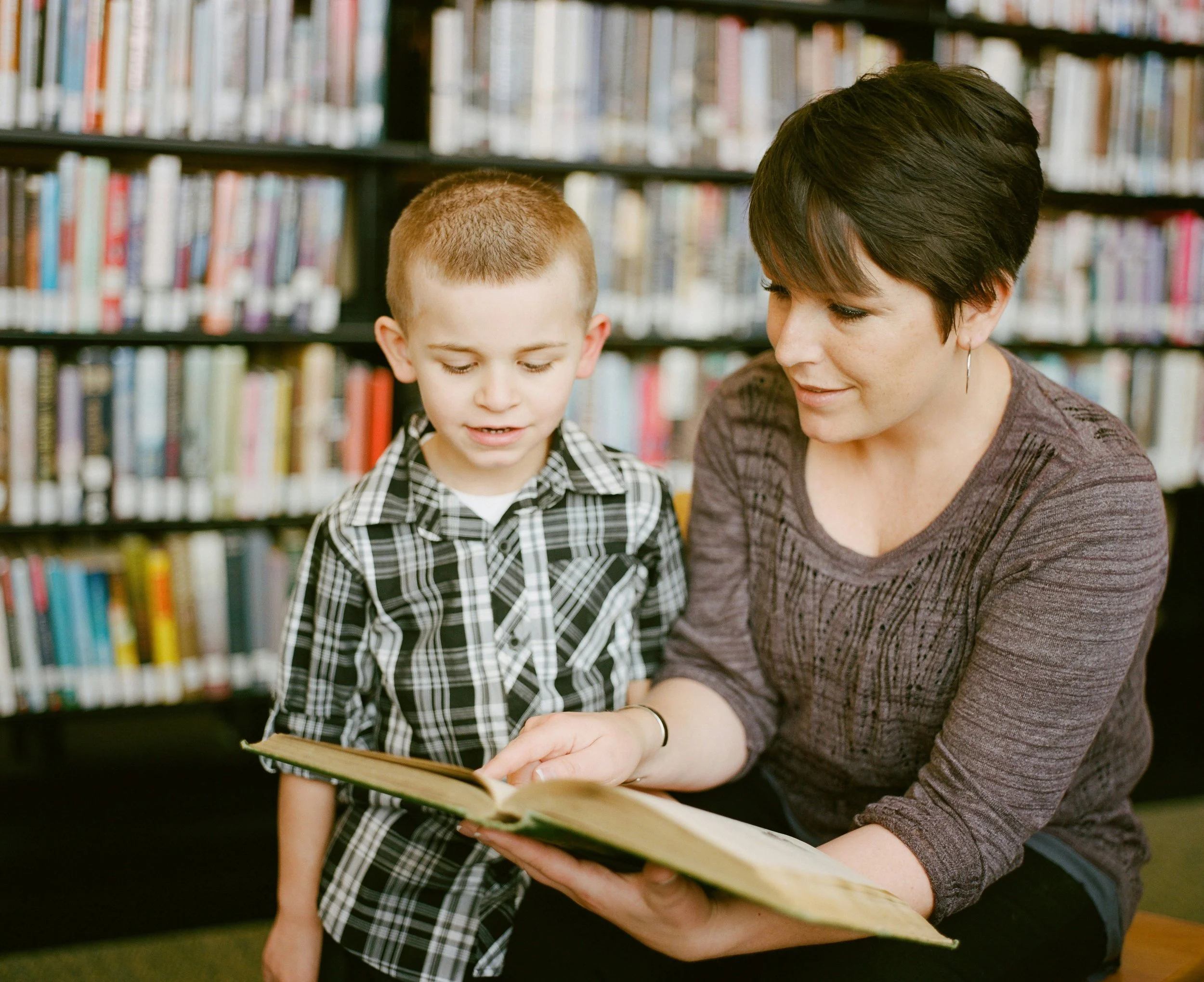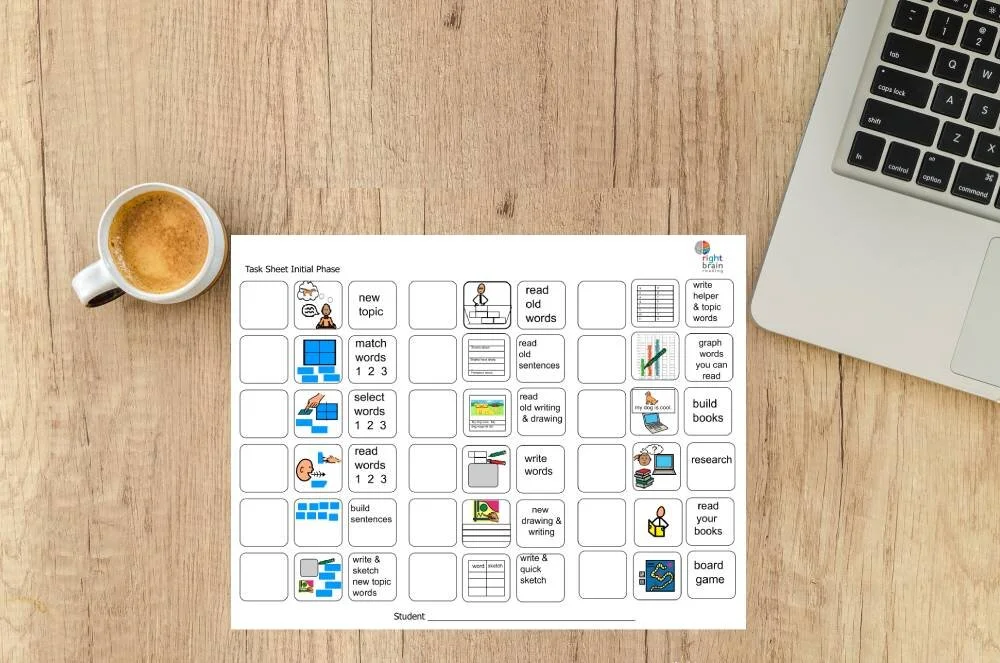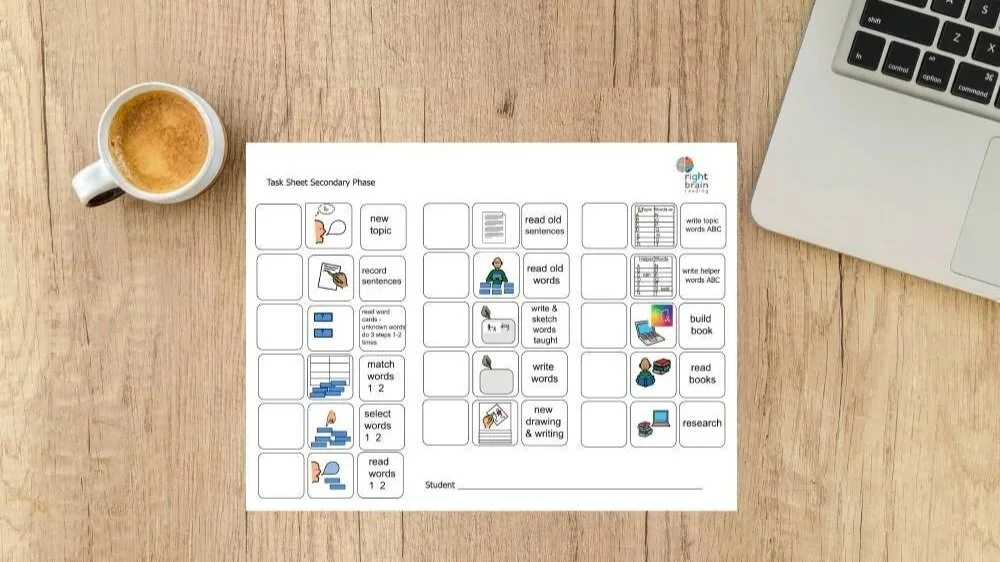
The Right Brain Reading Phases
Initial Phase for Right Brain Reader
Laying the Foundation with High-Interest Words
Start with one topic that the student has an interest in and chooses to talk about. As the student talks about their interest, the instructor records high interest words that they will use to teach them how to read.
The instructor is recording highly visual and meaningful words – typically nouns and verbs – that are connected to their conversation on a recording sheet and then chooses four of those words to teach.
Those words are then used during the three teaching stages of word acquisition:
MATCHING
SELECTING
READING
The teaching sequence is simple and increases in cognitive complexity step by step with predictability.
Once the student has done all three stages of word acquisition, those same words are then used to make meaningful sentences. The word cards are arranged by the instructor to make simple sentences, with helper words written on cards as needed by the instructor.
Those sentences are then used to make a book, with the sentences the student has read successfully with the instructor. The individual words are also recorded in a table at the back of the book for more practice.
Initial Phase Activities
Activities during the Initial Phase are critical for success. There are certain activities that need to be completed, once the Three Stages of Word Acquisition are completed for each topic.
-
Building sentences
Writing the words and doing a quick sketch on a dry wipe board
-
Student reads the word cards individually
Student records one of their sentences and draws a picture to match on paper
Student reads the sentences from their topics
Student prints their topic words and the helper words on a dry wipe board and reads them back
Student writes each topic word and draws a quick sketch of each word on paper
Student records topic and helper words in alphabetical order on paper
-
Creating their own book, using technology. Variety of programs and examples of them are provided here (Publisher, Word, Book Creator, etc.)
Print their book for them to read and to share with others
Count number of new words learned and record on graph
Secondary Phase for Right Brain Reader
Adapting the Method as Fluency Grows
As students make growth and progress with this method, you will find that you will need to make adaptations to the teaching sequence.
Students can learn the words more quickly than in the beginning and don’t always need the three repetitions to learn the words.
Don’t remain doing three stages of the teaching phases if they don’t need that much repetition. Once they are used to accessing their right hemisphere, they typically can read and learn the work with less rehearsal. Honour this by having them do less repetition.
As students are progressing quickly in their reading ability, you change how you teach them new words. As they talk about their topic, you record those sentences directly on the sentence template.
Read the sentences back to the student to ensure that you have captured what they want to say.
Students working at this secondary phase can often make their own books independently. They can use speech to text technology as they build their books, after having scaffolded support in the initial phase while building their books. There are a variety of options available to build books: Publisher, Powerpoint, BookCreator.
Ways to Work at this Level
There a few different ways to work at this level, each with increasing difficulty.
-
Write all of the topic words on word cards (you might have up to 30), show the student the words and have them read them to you. The ones they know are put into one pile. The ones that they don’t know will be the ones that you will teach them using the ‘match, select, read’ process.
Ensure that they talk about each word, activating their right hemisphere with that word
They can do a quick sketch of each word they don’t know, once you have done the match, select, read process.
-
Read over the sentences to themselves, putting their finger on words that they don’t know. The instructor will record those words on the grid template (you can write more than one word in each square) and teach them using an adapted ‘match, select, read’ process.
Ensure that they talk about each word, activating their right hemisphere with that word
They can do a quick sketch of each word they don’t know, once you have done the match, select, read process.

Advanced Phase for Right Brain Reader
Building Comprehension, Retelling, and Writing Skills
Students will continue making progress with this method and you will have to work to keep up with their progress!
You can continue with the processes used in the Secondary Phase, where students talk and you record the words in the sentence template.
Students can do retellings and summaries of text using this method.
This is a perfect way to help students understand how to organize their writing when they are at this phase.
As they talk, you can decide where their sentences fit best in the template. The top and bottom spaces are for the introduction and conclusion, with the middle three spaces for sequential information.
You can also use this format to write factual projects or reports. The first space is for the main idea, the other spaces hold information that is connected to one idea. You can ask students to expand on one part of their topic and write it in the correct place – each space holds one detail that they can expand on.

Teach Reading in a Way That Works
Learn to Teach the Right Brain Reading Method






